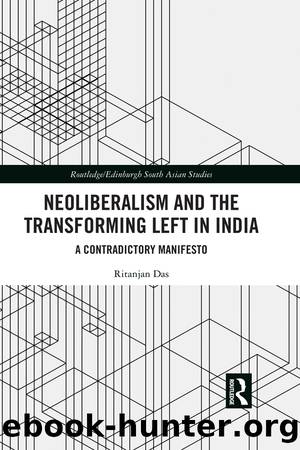Neoliberalism and the Transforming Left in India by Ritanjan Das

Author:Ritanjan Das
Language: eng
Format: epub
Publisher: Taylor & Francis (CAM)
5
The politics of transition
Contradictions, negotiation and consensus
We are facing a transitional period of development: from agriculture to industry ⦠I cannot build socialism in this part of the country ⦠We must have modern industries and have to try to attract investment from big business.
Buddhadeb Bhattacharya, Chief Minister of West Bengal (2000â2011)1
Introduction
Since the publication of Thomas Kuhnâs seminal work, The Structure of Scientific Revolutions, there has been considerable interest in the role of interpretive âparadigmsâ in the development of natural and social sciences (Weigel, 1986). The transition from agriculture to industry in modern times presents a similar shift, with the onus of negotiating a successful transition often becoming the biggest challenge for the agency at the helm of the process. The story of West Bengal is no different, as Bhattacharya admits in the above interview, and observes further: âwe are at a turning point and it is therefore critical that we formulate our policies in a very clear-cut manner. There should be no confusion over our intentions and the meaning of the transition. There should be no grey areasâ (emphasis added). Unfortunately, despite such rhetoric emanating from the highest echelons of the government, it is precisely in its intention and meaning that the transition experience in West Bengal went wrong.
The political and ideological choices of the CPIM during the initial years of transition (c.1991â2000) were explored in the previous chapter. After these initial choices, once the party arrived at an ideological consensus on pursuing an industrialisation-centric growth model, it then had to grapple with the challenges of a new set of political negotiations, the dynamics of which continued to shape the political economic landscape of the state over the next 15 years. Along with the usual collective action problems that come with any developmental shift, the CPIM was confronted with an additional policy-change dilemma not faced by any other centrist or right-wing party in India: how to âmodify its ideological agenda toward public sector-led industrialization and redistributive economic policy strategies without losing its core base of political support, public sector workers and the middle peasantryâ (Sinha, 2004:80). Such a dilemma is especially pronounced within a democratic framework, she continues, where parties like the CPIM may be punished electorally for abandoning earlier ideological commitments.2
In addition to this dilemma, the erstwhile credibility problem continued to haunt West Bengalâs industrial prospects. Widespread scepticism about the CPIMâs political intentions among investors and the public alike, made marketing the state an extremely difficult task. The government needed to reassure many of its serious and long-term commitment to policy change (ibid.:83).
However, this was a serious problem for the party. Achieving credibility, as Rodrik argues, often requires large-scale policy initiatives that would not otherwise be necessary (Rodrik, 1998) and such policy reforms require fundamental doctrinal changes. While there are socialist parties who have gone down the path of reforms and revision to pursue market-oriented policies (e.g. the socialist parties in France, Spain, and Italy), the national apparatus of the CPIM has always refused to adopt doctrinal modifications (Sinha, 2004).
Download
This site does not store any files on its server. We only index and link to content provided by other sites. Please contact the content providers to delete copyright contents if any and email us, we'll remove relevant links or contents immediately.
Zero to IPO: Over $1 Trillion of Actionable Advice from the World's Most Successful Entrepreneurs by Frederic Kerrest(4076)
Machine Learning at Scale with H2O by Gregory Keys | David Whiting(3663)
Harry Potter and the Goblet Of Fire by J.K. Rowling(3619)
Never by Ken Follett(3550)
Ogilvy on Advertising by David Ogilvy(3351)
Shadow of Night by Deborah Harkness(3182)
The Man Who Died Twice by Richard Osman(2823)
Book of Life by Deborah Harkness(2726)
My Brilliant Friend by Elena Ferrante(2707)
How Proust Can Change Your Life by Alain De Botton(2620)
0041152001443424520 .pdf by Unknown(2612)
Will by Will Smith(2595)
The Tipping Point by Malcolm Gladwell(2566)
How to Pay Zero Taxes, 2018 by Jeff A. Schnepper(2507)
Purple Hibiscus by Chimamanda Ngozi Adichie(2504)
Hooked: A Dark, Contemporary Romance (Never After Series) by Emily McIntire(2428)
Rationality by Steven Pinker(2159)
Borders by unknow(2122)
Daughter of Smoke and Bone by Laini Taylor(2086)
